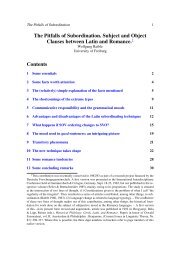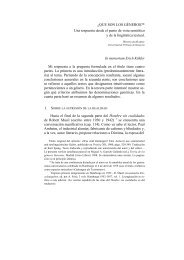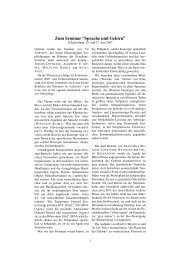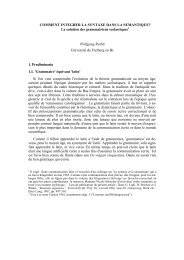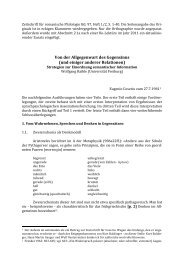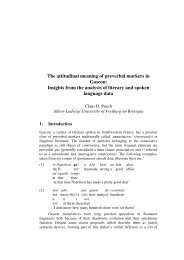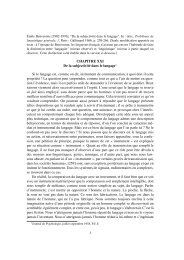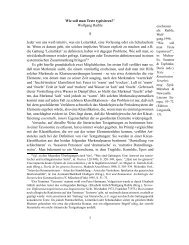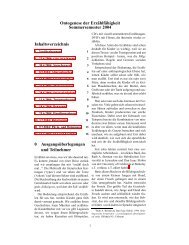A Summary of Role and Reference Grammar
A Summary of Role and Reference Grammar
A Summary of Role and Reference Grammar
Create successful ePaper yourself
Turn your PDF publications into a flip-book with our unique Google optimized e-Paper software.
Jolly (1993) for an explication <strong>of</strong> the purposive LS. ‘(x, [LS ... x ...])’ means that the participant<br />
denoted by x is involved in both states <strong>of</strong> affairs signaled by the matrix <strong>and</strong> embedded LSs. The x<br />
argument in (13j) is optional, because some propositional attitude predicates are one-place <strong>and</strong><br />
take only a propositional argument, e.g. be true, be false, be certain. The contrast between direct<br />
<strong>and</strong> indirect discourse is signaled by the existence <strong>of</strong> an illocutionary force operator in the embedded<br />
LS in direct discourse <strong>and</strong> by the lack <strong>of</strong> one in the embedded LS in indirect discourse.<br />
The semantic relations form a continuum expressing the degree <strong>of</strong> semantic cohesion between<br />
the propositional units linked in the complex structure, i.e. the degree to which they express<br />
facets <strong>of</strong> a single action or event or discrete actions or events. This may be represented as<br />
in Figure 14.<br />
Causative [1]<br />
Phase<br />
Manner<br />
Motion<br />
Position<br />
Means<br />
Psych-Action<br />
Purposive<br />
Jussive<br />
Causative [2]<br />
Direct Perception<br />
Indirect perception<br />
Propositional Attitude<br />
Cognition<br />
Indirect Discourse<br />
Direct Discourse<br />
Circumstances<br />
Reason<br />
Conditional<br />
Concessive<br />
Simultaneous Actions<br />
Sequential Actions<br />
Situation-Situation: Unspecified<br />
Closest:<br />
Facets <strong>of</strong> a single event or action<br />
Loosest:<br />
Distinct events or actions<br />
Figure 14: Interclausal semantic relations hierarchy<br />
The syntactic linkage relations may be ranked hierarchically in terms <strong>of</strong> the strength <strong>of</strong> the<br />
syntactic bond between the units, i.e. in terms <strong>of</strong> how integrated the units are into a single unit or<br />
are coded as distinct units, as in Figure 11. The interaction <strong>of</strong> the two hierarchies is expressed in<br />
the interclausal relations hierarchy in Figure 15. The relationship between the syntactic <strong>and</strong> semantic<br />
relations in clause linkage is very complex, i.e. it is not one-to-one, but there are some<br />
striking regularities cross-linguistically. The primary principle governing the interaction <strong>of</strong> the<br />
two hierarchies is iconic: the closer the semantic relation between two propositions is, the<br />
stronger the syntactic link joining them (Silverstein 1976, Givón 1980). In other words, the semantic<br />
relations at the top end <strong>of</strong> the hierarchy should be realized by the linkage categories at the<br />
top as well, <strong>and</strong> the relations at the bottom <strong>of</strong> the hierarchy should be realized by the linkage<br />
categories at the bottom <strong>of</strong> the syntactic side. Moreover, while there is <strong>of</strong>ten more than one syn-<br />
20




